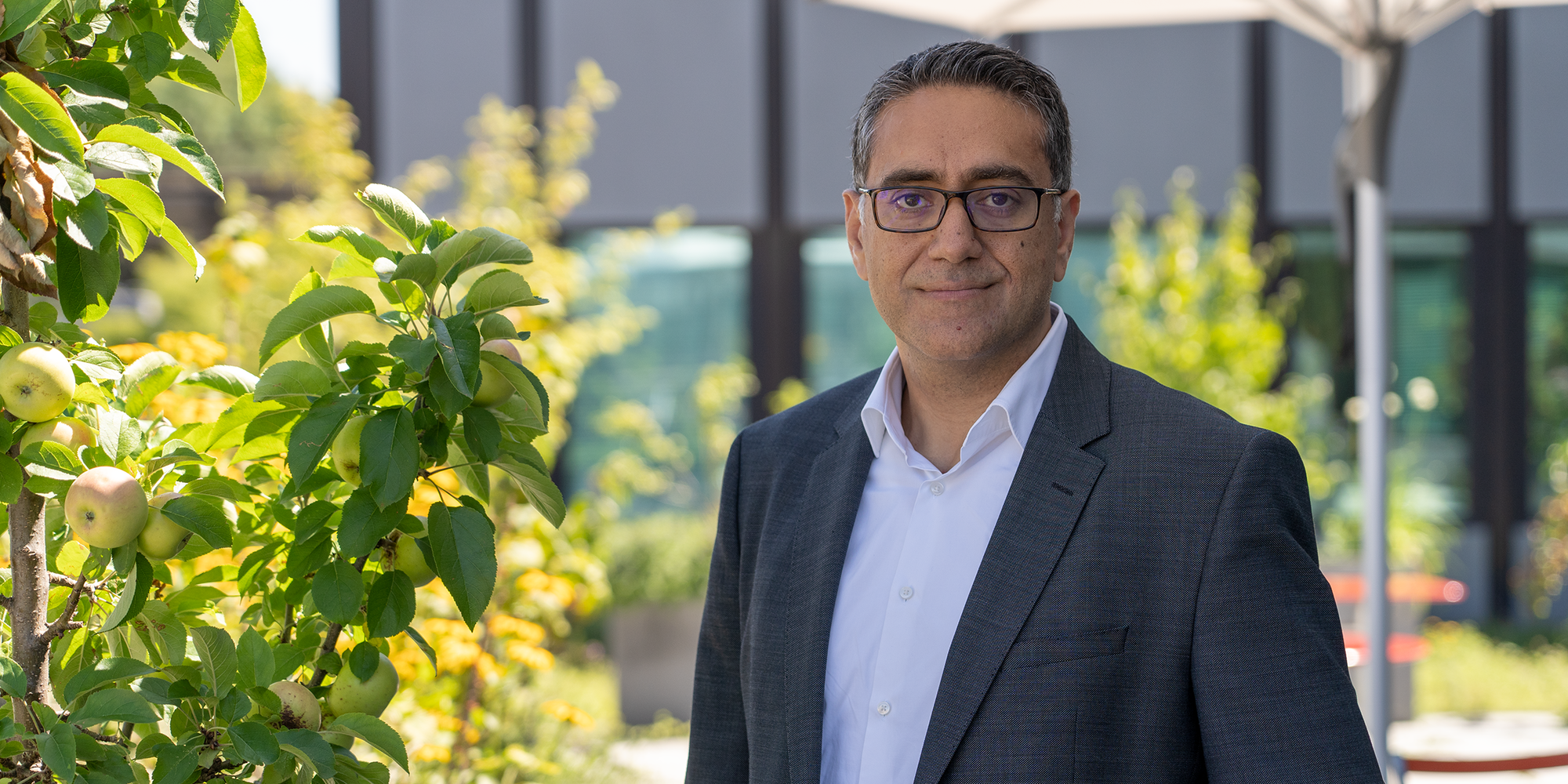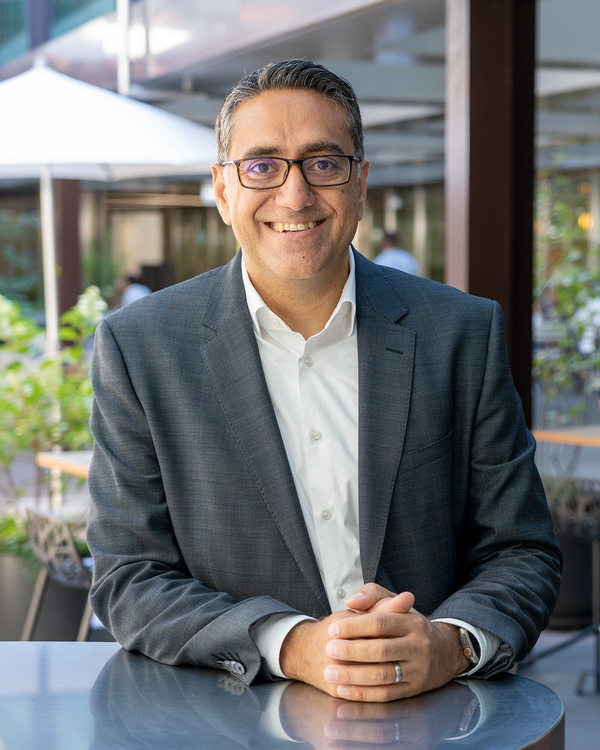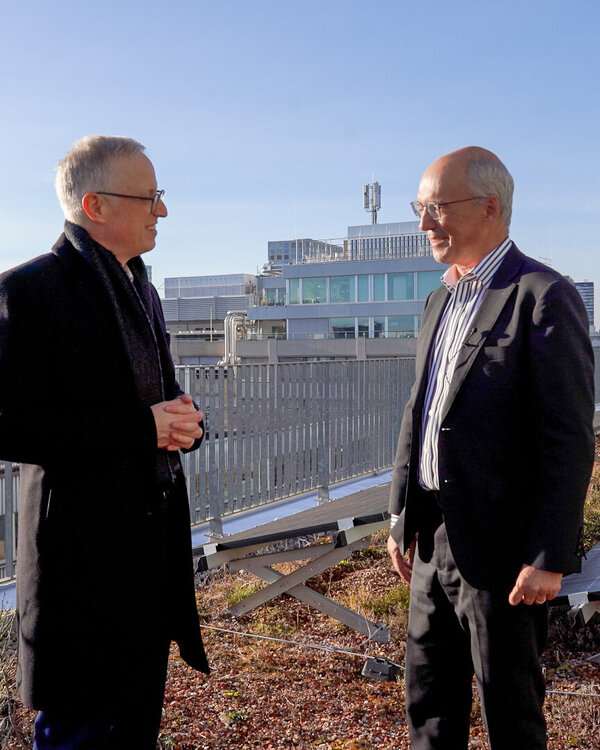"Sustainability comes at a price but that's good"
Bringing ecology and the economy together is a challenging task in the real estate sector, but it is doable. Rafik Awad, Portfolio Manager Real Estate, explains how this is done.

The real estate sector emits around 25 percent of Switzerland's total greenhouse gases. The federal government therefore regards the real estate sector as a key element in the implementation of the 2050 energy strategy. How is Zürcher Kantonalbank's Asset Management doing its bit here?
Rafik Awad: Asset Management at Zürcher Kantonalbank has clearly defined the road ahead: the real estate portfolios we manage will be climate-neutral by 2050. At the same time, we will meet our financial responsibilities towards our investors. These are mostly pension institutions which depend on constant, market-based returns to ensure they meet their pension commitments.
We need to achieve both sustainability and profitability.
And how is that done? Sustainability does not come free.
Sustainability comes at a price but that's good. Why? A price tag has a disciplining effect on investment decisions and requires forward-looking planning before making a move. The fact is that sustainable real estate generates added value at various levels, such as lower ancillary costs for tenants or a greater willingness to pay in the transaction market.
In specific terms, how much CO2 have you actually been able to save?
We have been working on sustainability measures in the Swisscanto real estate products managed by Zürcher Kantonalbank since 2016. That is why our average emission intensity in 2021, at 11.3 kg of CO2 per heated square metre, was significantly lower than that of the Swiss building stock at over 15 kg/m2. We achieved this for the most part at relatively low costs by implementing comprehensive operational optimisations and smaller maintenance measures. Achieving greater CO2 reductions will require a growing shift in energy sources, shell renovations, and new replacement buildings. This requires significantly higher investments.
The recently adopted Climate and Innovation Act includes subsidies of CHF 3.2 billion. Will this compensate for the additional costs of major changes?
Only partially. For this reason, it is essential we have detailed analyses that show as objectively as possible which CO2 reduction measures make sense at what time and for which properties, both ecologically and financially.
Which criteria determine the implementation of CO2 reduction measures in a portfolio?
In essence, we ask ourselves two questions: are we investing in the right measures from a cost-benefit analysis and do the measures also align with the property strategy?
In the cost-benefit analysis, we focus on the avoidance costs of different measures. In other words, how much does it cost to save one tonne of CO2 per year? The benefit here is of an ecological, rather than an economic, nature. The avoidance costs vary significantly depending on the measure and property. To calculate these accurately, we have collaborated with a specialised engineering firm to create a reduction path tool. This makes it possible to compare the investment costs and CO2 savings ratios of various measures such as heat pumps, district heating, biomass, shell renovations and photovoltaics for each property. The combination of various measures can, depending on the situation, lead to an additional reduction in avoidance costs.

What is the average cost of reducing consumption by one tonne of CO2 in your portfolio?
The avoidance costs are very much portfolio-specific and therefore not representative of the Swiss real estate market. The avoidance costs for heat pumps in our portfolio range from a low CHF 100 to over CHF 800 per tonne of CO2 per year. In the case of district heating, they are generally lower and range from CHF 30 to over CHF 200. This is because our properties are mainly located in urban locations. The year of construction and the extent of intervention determines the size of the avoidance costs in the case of shell renovations. They range from CHF 50 to well over CHF 1,000. In individual cases, they are also above CHF 1,000 for photovoltaics. This is partly to do with feed-in tariffs and the already relatively clean electricity mix in Switzerland.
This wide range shows that there are no blanket solutions. It is necessary to optimise each property individually in ecological and economic terms. Across the entire portfolio, we are currently averaging around CHF 300 per tonne of CO2.

We make optimisations, often in several iterative steps, to further reduce the avoidance costs for both our investors and society.
Rafik Awad, Portfolio Manager Real Estate
As mentioned above, the property strategies are also influenced by the scope and timing of the CO2 reduction measures. Can you elaborate on this and tell us how they affect the prioritisation of measures?
The real estate strategies are the outcome of two systematic analyses. Firstly, we look at the competitive advantage of a property. This primarily includes the assessment of the property and rental quality. But we also assess the attractiveness of the market with a focus on location factors. Depending on this, real estate is assigned to the "Hold", "Develop" or "Sell" category. "Hold" properties are maintained and stay in the portfolio without a change plan. In the case of "Develop" properties, the options for expansion, conversion or new construction are examined and implemented. "Sell" properties should be sold at the best possible time. The avoidance costs combined with the property strategies determine the prioritisation of reduction measures.
What does this mean exactly? When is a CO2 reduction measure brought forward or postponed?
CO2 reduction measures are preferred for properties in attractive residential locations, which have high CO2 emissions and relatively low avoidance costs. But CO2 reduction measures with currently high avoidance costs or properties with inappropriate real estate strategies are given lower priority. This applies, for example, to real estate at locations to be connected to the district heating network in the future or for which replacement new construction is planned in the medium term.
This is the bread and butter of what we do every day. We make optimisations, often in several iterative steps, to further reduce the avoidance costs for both our investors and society. Our real estate team is doing an excellent job in the ongoing implementation of the measures.
How do you handle the issue of replacement building construction?
A replacement building is often the best solution for older structures with high exploitation reserves, both from an ecological point of view and in terms of the efficient use of scarce land. In light of the current and probably also future high demand for housing, more housing is likely to be needed. The question is: Where should it be built? Densification would make sense from an ecological point of view.
Shortages of skilled workers and rising production costs are delaying the transition to sustainable sources of energy. How are you dealing with these challenges?
We are noticing that it has become more time-consuming and expensive to implement certain CO2 reduction measures. Economically, it is important to get cost increases under control. Otherwise, subsidies will be merely used to compensate for the higher costs. I think we will be successful here. The strength of the market should lead to a higher supply of environmental technologies and specialists in the medium term and this will have a cost-cutting effect.
Can all real estate operations in Zürcher Kantonalbank's Asset Management be made climate-neutral by the deadline?
We are on the right track to making all our real estate operations climate-neutral by 2050. But we also rely on partner services. This applies in particular to the generation of electricity and district heating. Both must be converted to sustainable energy sources across the board in the next few years.
Finally, a personal question: We have spoken of "optimising" several times. Where does this drive to optimise come from?
I became this way at the start of my professional life. At the time, I was a young engineer at the architectural and engineering firm Werner Sobek. Werner Sobek was my professor at university too. He taught us that we need to work towards a sustainable world and must therefore plan and build in a resource-conserving and recycling-oriented manner. This drive for optimisation has practically become a part of me. Applying this at Zürcher Kantonalbank on a daily basis is a source of motivation for me and the entire team.

